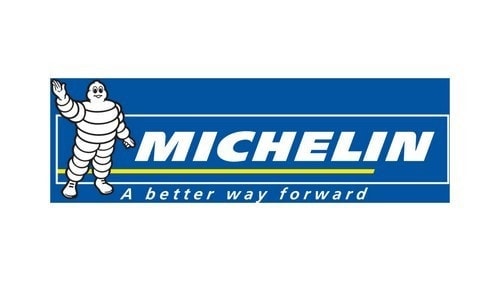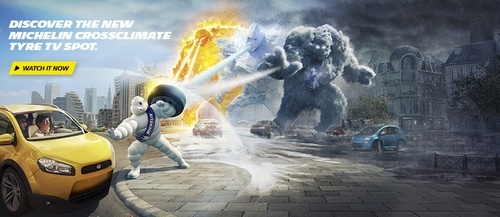The Marketing mix of Michelin analyses the 4Ps of Michelin, which includes the Product, Price, Place, and Promotions. Michelin is associated with the automotive industry and deals with the manufacturing and distribution of tyres. It is of French origins and was founded in 1889 by its co-founders and brothers, Andre and Edouard Michelin. It is ranked amongst the top three manufacturers in the world as the largest manufacturer of tires. Its competitors are as follows.
- Continental
- Pirelli
- Bridgestone
- Goodyear
- Cooper Tyres
- Sumitomo
- Yokohama Tyres
About Michelin
- Type: Multinational tire manufacturing company
- Industry: Manufacturing
- Founded: May 28, 1889, Clermont-Ferrand, France
- Founders: Andre Michelin and Edouard Michelin
- Headquarters: Clermont-Ferrand, France
- Area served: Worldwide
- Key people: Florent Menegaux (Chairman) and Florent Menegaux (CEO)
- Number of employees: 124,000
Table of Contents
Michelin Product Strategy
Michelin is a world-recognized company that manufactures and markets tires. Besides Michelin, it owns several other tire brands like Tigar and Kimber. It also publishes road maps of France and other global markets like the United States, Thailand, Africa, and Europe.
These maps are now also sold online. Its fully-owned subsidiary ViaMichelin has offered digital mapping services since 2001 and generates nearly 400 million route data and maps every month on its portal. Michelin is also known for its Green Guides related to tourism and Red Travel Guides for restaurants and hotels. Michelin stars are awarded to restaurants for exemplary cooking and are considered a great honor by restaurants. It is famous for its inventions, like creating radial, neural, and removable tires.
The new Product, Mix of Michelin in 2023, is as follows (Source)
- Automotive Tires: This includes a wide range of tires for different types of vehicles, such as: Passenger Cars: They offer various types of tires, like summer, winter, and all-season. Light Trucks: Tires designed for durability and heavier loads, also available in different seasonal varieties. Performance Vehicles: High-performance tires intended for sports cars, offering better grip and handling at high speeds.
- Commercial Tires: Michelin provides tires for commercial and industrial applications, including trucks and trailers, Which are durable tires designed for long hauls and heavy loads. Construction and Industrial Machinery: Specialized tires for heavy machinery in construction, mining, and industrial sectors. Agricultural Vehicles: Tires for tractors and other agricultural equipment designed for various terrain types.
- Two-Wheel Tires: This category includes motorcycles and bicycle tires catering to casual riders and professional racers.
- Aircraft Tires: Michelin also produces tires for various aircraft types, including commercial airlines and military planes.
- Specialty Products: This can include tires for unique applications like racing, space shuttles, or other special vehicles.
- Services and Solutions: Beyond just tires, Michelin offers various vehicle maintenance and tire management services, especially for commercial fleets.
- Sustainable Solutions: Michelin is developing environmentally friendly and sustainable tire technologies, including recycling programs, fuel-efficient tires, and research into alternative materials.
Michelin Place Strategy
Michelin has spread its market presence in truck tires out from France to several countries of the world. Its headquarters base is at Clermont-Ferrand in France. Michelin, in the year 2012, was involved in the manufacturing of 166 million tires, and this was possible because of its sixty-nine manufacturing plants located in eighteen different countries, like Italy, Thailand, Brazil, Canada, United Kingdom, United States, Germany, Spain, and of course France.
Michelin has a global distribution channel that includes the services of wholesalers, retailers, suppliers, warehouses, and stockists. Tires are quickly supplied to small retail outlets as well as showrooms. With the advent of e-commerce, Michelin has opened its website and markets its products to customers worldwide. It also has stores, tie-ups with other brands, and online shopping portals to sell its products.
- Global Distribution Network: Michelin has established a vast global distribution network, including manufacturing plants, warehouses, and sales offices in numerous countries. This extensive footprint enables efficient distribution and availability of their products in diverse markets worldwide.
- Partnerships with Dealers and Retailers: The company partners with a wide range of dealers and retailers, from specialized tire shops to large automotive service chains, ensuring Michelin products are easily accessible to customers across different regions.
- Online Sales Platforms: Recognizing the shift towards digital commerce, Michelin has strengthened its presence on online sales platforms. This allows customers to purchase tires directly from the company or through third-party e-commerce sites, enhancing convenience and reach.
- OEM Partnerships: Michelin has strategic partnerships with original equipment manufacturers (OEMs) in the automotive industry. These partnerships ensure that many new vehicles are equipped with Michelin tires off the production line, boosting brand visibility and market penetration.
- Specialized Service Centers: The company operates specialized centers offering professional tire fitting and maintenance services. These centers serve as points of sale and enhance customer loyalty through high-quality service experiences.
Michelin Pricing Strategy
Michelin has adopted a variable pricing policy for its products that is value-based. Michelin boasts of long-lasting and quality tires. Prices for Michelin tires in every region are different as they are impossible on the taxes imposed by that government and its production and supply cost to competitors in the area. As it manufactures a diversified range of products, it is impossible to set up a single pricing policy collectively.
The company has set up different prices for different vehicles. For example, off-road vehicle tires cost more than tires used for on-road vehicles. Michelin faces stiff competition from other companies, which have adopted a competitive pricing policy to gain an advantage in such competitive times. It has maintained its high quality but has reduced its profits to implement a reasonable pricing and marketing strategy for the target market. This same marketing strategy has helped the company increase sales figures and garner more significant revenues.
- Value-Based Pricing: Michelin primarily employs a value-based pricing strategy. This means that the prices of its products are set based on the perceived value it offers to the customers rather than solely on the cost of production.
- Premium Pricing: Consistent with its brand image as a purveyor of high-quality tires, Michelin adopts a premium pricing model. This strategy involves setting prices higher than many competitors, reinforcing the perception of Michelin tires as a high-end, superior product.
- Competitive Positioning: Prices are set considering competitors’ charges, particularly in segments where Michelin faces stiff competition.
- Segmented Pricing: Michelin’s diverse product range allows for segmented pricing. Different segments like automotive, commercial, and specialty tires are priced differently, considering the specific market dynamics and customer segments they cater to. For instance, Michelin high-performance sports tires might be priced higher than standard passenger car tires due to the specialized technology and materials used.
- Geographical Pricing: Michelin’s global presence means its pricing strategy is also tailored to different geographic markets. Economic factors, local competition, distribution costs, and customer purchasing power in each region influence the pricing strategy.
Michelin Promotion Strategy
Michelin is a brand easily recognized because of its mascot Bibendum, also known to customers as Michelin Man. It has been an active participant in several events and sports. From 1972 to 2008, the brand participated in MotoGP and achieved nearly 360 victories. It has also competed in Formula One and won the Formula One Driver’s Championship with McLaren and Brabham.
Michelin’s promotion, sales, and marketing strategy focuses on building brand prestige through high-profile sponsorships in motorsports, strategic partnerships with vehicle manufacturers, and engaging marketing and advertising campaigns emphasizing safety features, durability, and performance.
The company leverages digital platforms and social media for targeted advertising and customer engagement strategies. It maintains its iconic Michelin Man mascot as a recognizable symbol of quality and trust among brands and consumers worldwide. Additionally, Michelin invests in eco-friendly initiatives and innovations, using these features as vital promotional points to appeal to environmentally conscious consumers.
Michelin is also associated with races like the American Le Mans Series, 24 Hours of Le Mans, and the European Le Mans Series. Michelin has adopted an aggressive marketing policy to retain customers and increase its brand awareness in the consumer market segment. Besides sports activities, they have launched several ad campaigns that are shown in newspapers, trade magazines, business magazines, hoardings, television, and radio. Michelin also advertises its brands on social media platforms via its website and other shopping platforms. The company also takes part in trade fairs to promote its products.
Some Recent Video ads and Print ads of Michelin are:
Michelin Motion for Life – YouTube
Liked this post? Check out the complete series on Marketing Mix


Thank you for this article, can you detail your sources ?
Hii. Most of it is the Michelin website and our own observations and analysis. It gets difficult to publish regularly and that too with all sources intact. Hence, as of now, we are not publishing any sources with any articles. Rest assured the data is researched well.